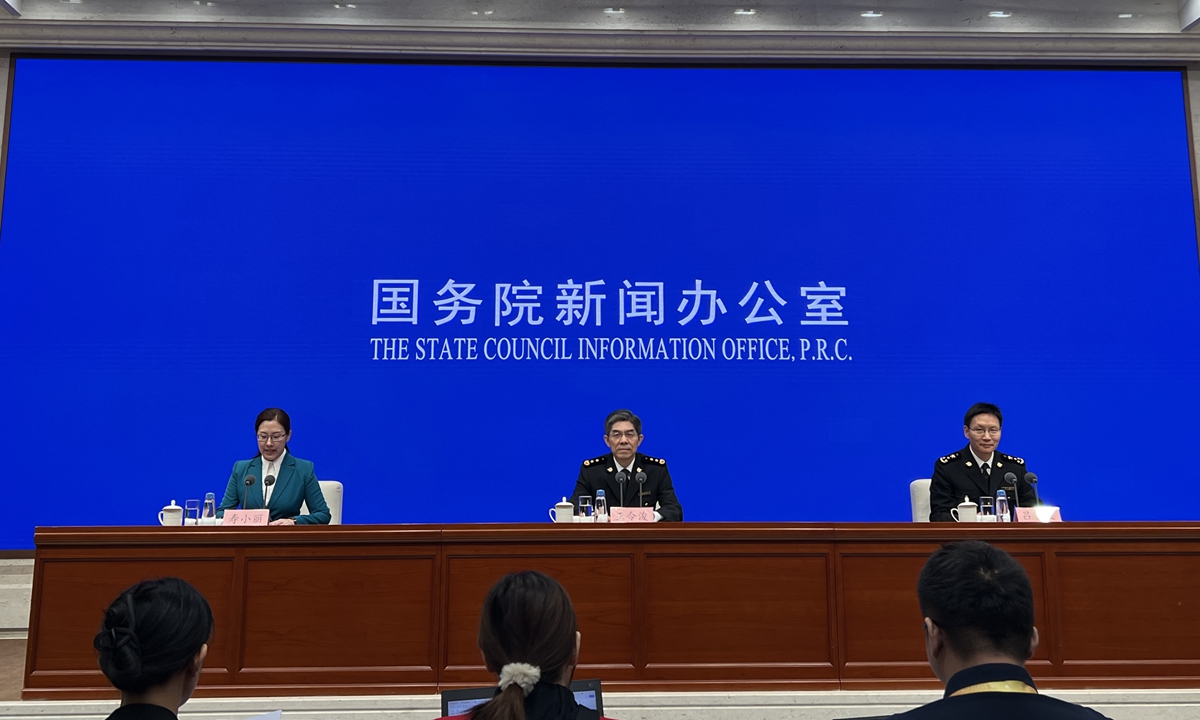
Photo: Global Times
China’s foreign trade in 2023 grew 0.2 percent year-on-year to 41.76 trillion yuan ($5.83 trillion), showing stability amid sluggish global demand, supply chain blockade and rising geopolitical uncertainty.
In breakdown, the exports gained 0.6 percent in the yuan term, while imports dropped 0.3 percent last year.
In December, foreign trade jumped 2.8 percent year-on-year to 3.81 trillion yuan, reaching a monthly historic high. The 2.8 percent expansion also accelerated from the 1.3 percent and 0.8 percent growth recorded in November and October.
Reading from the data, export growth has indeed slowed down compared to previous years, but we should know that China's exports have reached a new high on a high base, not only achieving reasonable growth in volume, but also maintaining overall stability in share, said Lü Daliang, a spokesperson with the General Administration of Customs at the press conference.
The export has shown our strong resilience and comprehensive competitiveness, he said.
The drivers of China’s exports remained diverse and robust in 2023. Exports of “the new three,” namely EV, lithium-ion batteries and solar cells, hit the 1-trillion-yuan mark for the first time, growing 29.9 percent year-on-year to 1.06 trillion yuan last year, according to the data shared at the press conference on Friday.
The global export share remains stable at a high level, and China’s manufacturing competitiveness remains solid, said Lü.
China’s share of export remained stable in 2023, the "cake" has not become smaller, and the overall competitiveness remains stable, Lü said.
Generally speaking, foreign trade in 2023 has met expectations, considering the unique circumstances such as the lingering impact from the pandemic at the beginning of the year, coupled with inflation in the US and Europe, Li Changan, a professor at the Academy of China Open Economy Studies of the University of International Business and Economics, told Global Times on Friday.
In last December, overall import and export activities rose by 2.8 percent month-on-month, which Li said serves another indication of a positive trend that may sustain in 2024. "Given this situation, it can be stated that the goal of stabilizing foreign trade has been essentially achieved," Li said.
Li also said that he believes the nation has overcome a rather challenging period and added that this year should be comparatively optimistic.
In 2024, the nation's focus will primarily be on driving domestic demand, as the domestic growth drivers have been robust in recent years, Bai Ming, a research fellow at the Chinese Academy of International Trade and Economic Cooperation, told the Global Times on on Friday.
Moreover, breakthroughs in various technologies, including the high-quality development represented by new flagship products such as new-energy vehicles, are expected to further bolster foreign trade growth, Bai said.
In 2023, China’s trade with BRI partner countries rose 2.8 percent year-on-year to 19.47 trillion yuan, accounting for 46.6 percent of the total trade. The proportion is 1.2 percentage points higher than 2022. Trade with Latin America and Africa was up 6.8 percent and 7.1 percent year-on-year in 2023.
Lü highlighted that the influence of Chinese brands will further expand, as the Chinese branded products have been exported to more than 200 countries and regions, explaining that the proportion of exports in the equipment manufacturing industry has increased.
In 2023, the exports of the equipment manufacturing industry, which reflects industrial supporting and integration capabilities, hit 13.47 trillion yuan, an increase of 2.8 percent, and the proportion in China’s total export value increased to 56.6 percent.
In particular, China's automobile and shipbuilding industries maintained a good momentum, and automobile production and sales hit new highs.
Looking ahead, the favorable conditions for China to develop foreign trade outweigh adverse factors in 2024, Wang Lingjun, Vice Minister of the General Administration of Customs of China.
Despite the rise of protectionism, intensifying geopolitical conflicts and impacts from the Red Sea crisis, China’s economy is resilient, with great potential and vitality. It also has the socialist system advantage, a sheer size of market, and strong production capacity, Wang added.
Global Times



